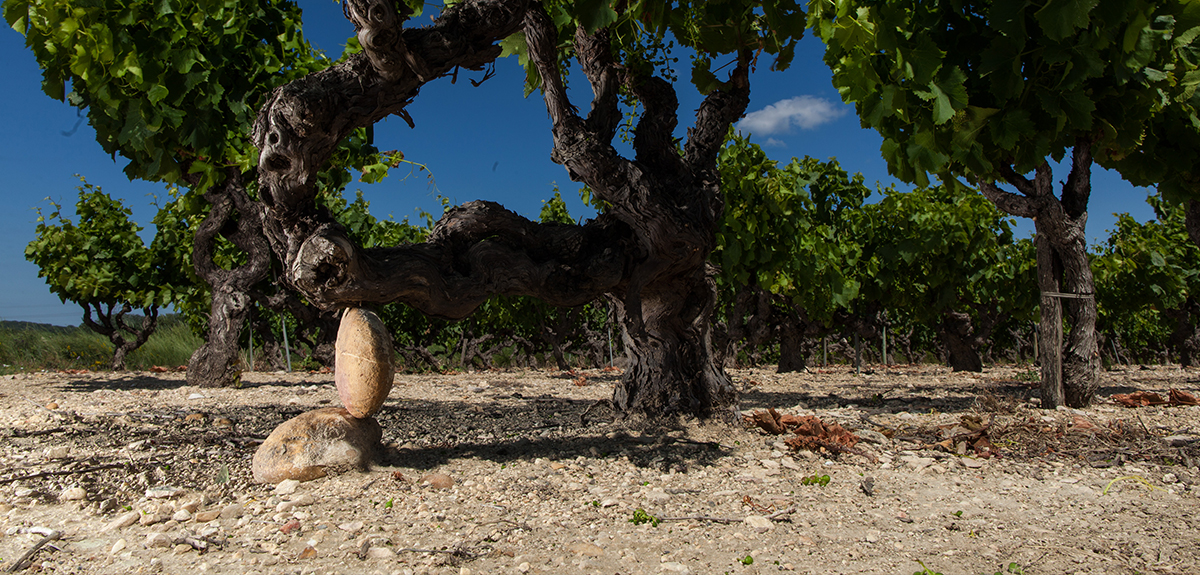
Châteauneuf-du-Pape Specificities
Terroir
Even if round pebbles are present on numerous plots, they certainly don’t cover the whole appellation area which boasts a very wide variety of soils. Some sectors are composed of gravelly or sandy earth and some even with calcareous or calcareous-clay soils.
The environment is equally varied with successions of plains, plateaux, terraces and hillsides.
The infamous Châteauneuf-du-Pape “round pebbles” and their effects on the wine
During the Ice Age, these pebbles were swept down from the Alps by the Rhône River when it covered the entire valley.
These pebbles are very numerous in some plots, giving the impression that the vineyards literally grew within a sea of pebbles.
These are mostly composed of large rock crystals mixed with red sandy clay. After storing up the day’s heat, they return it to the soil and vines over night, thus contributing to preserving the vine stocks at a constant temperature, allowing for bunches to ripen perfectly.
Anecdote
During the 1970’s, when Châteauneuf-du-Pape was beginning to acquire worldwide recognition, many American wine-growers tried to buy these pebbles and to send them by containers back to California.
The wine-makers are still laughing about that!
Châteauneuf-du-Pape specificities
Even though thirteen grape varieties are authorized in the Châteauneuf-du-Pape appellation, they are not mandatory.
Most domains use between two and four grape varieties for their red wines. It is even entirely possible to use only one grape variety. The most common case is that of cuvées made exclusively from grenache. But it is not rare to find cuvées exclusively made from mourvèdre or syrah.
Côtes du Rhône specificities
The rules for Côtes du Rhône are more complicated. So complicated that the producers' union provides a calculator to verify that the grape variety is correct.
Some examples:
- At least 30% grenache,
- minimum 20% syrah and/or mourvèdre,
- maximum 30% of so-called secondary grape varieties (marselan, caladoc, etc.)

